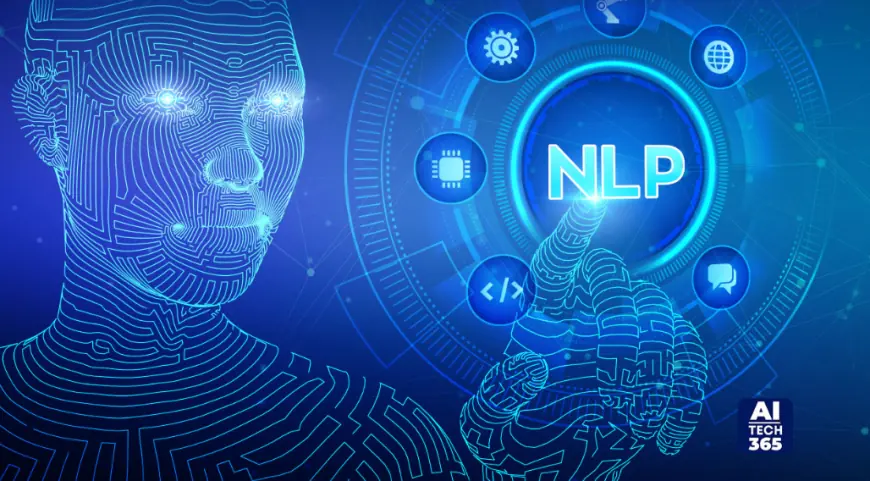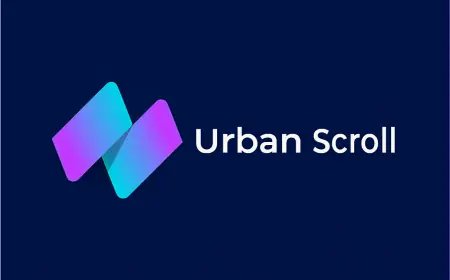Breaking Language Barriers with NLP in AI: How It’s Transforming Human-Machine Communication
Ever wondered how AI understands human language so effortlessly? The answer lies in Natural Language Processing (NLP) — a powerful subset of AI that enables machines to read, interpret, and respond to human communication.

Ever wondered how AI understands human language so effortlessly? The answer lies in Natural Language Processing (NLP) — a powerful subset of AI that enables machines to read, interpret, and respond to human communication. As technology continues to evolve, NLP is at the forefront, helping bridge the gap between how people speak and how computers process information. In this article, we’ll explore what NLP is, how it works, its real-world applications, and why it’s vital for the future of AI.
What is NLP in Artificial Intelligence?
Natural Language Processing (NLP) is a field within artificial intelligence focused on enabling machines to comprehend and interact using human language. It brings together techniques from computational linguistics, machine learning, and deep learning to analyze and interpret both text and spoken language.
With NLP, AI systems can:
-
Translate languages in real-time
-
Respond to voice commands
-
Summarize large volumes of unstructured data
-
Extract insights from reviews, social media, and online content
-
Perform sentiment analysis, topic classification, and more
For businesses, NLP offers an edge by streamlining data interpretation, enhancing customer feedback analysis, and driving smarter decision-making processes.
Why NLP is Crucial in AI Development
NLP plays a key role in advancing AI’s capabilities, especially in its quest to replicate human-like intelligence. As AI technologies progress, their success is increasingly measured by how well they understand and generate natural language—a critical marker of human cognition.
According to futurist and Google’s Director of Engineering Ray Kurzweil, AI is on track to match human intelligence by 2029, thanks in part to breakthroughs in NLP. This field is rapidly transforming industries, from healthcare to finance, by making machines more intuitive, responsive, and conversational.
With every advancement in NLP, artificial intelligence moves closer to achieving general intelligence—making NLP not just a subfield, but a driving force in AI’s future.
Also Read: The Ultimate Guide to Mastering Machine Translation
How NLP Works in AI Systems
At its core, NLP allows AI to read, interpret, and generate human language in a way that feels natural and intuitive. By combining the strengths of linguistics, machine learning, and computer science, NLP breaks down language into structured data that machines can understand.
Here’s what NLP enables:
-
Recognizing speech and converting it to text
-
Understanding grammar, sentence structure, and context
-
Detecting meaning, sentiment, and intent behind words
-
Generating human-like responses or summaries
Whether it’s typed text, spoken commands, or messy handwriting, NLP helps AI decode it—powering tools we use every day like virtual assistants, chatbots, and search engines.
Real-World Applications of NLP in AI
NLP has wide-ranging uses across sectors, especially in high-stakes fields like cybersecurity, where automation and accuracy are essential. Below are some powerful use cases:
1. Cyber Risk Automation
NLP enhances threat detection by automating the analysis of vast data sets, reducing manual risk assessments by up to 90%, and cutting operational costs for major organizations.
2. Intelligent Data Gathering
AI systems use NLP to automatically collect and summarize information from countless sources. This is crucial for both offensive and defensive cybersecurity strategies, enabling real-time threat intelligence.
3. Phishing Attack Detection
NLP can identify phishing attempts, even when attackers use unfamiliar tactics or language patterns. This proactive defense mechanism strengthens an organization's security posture.
4. Sentiment and Intent Analysis
Businesses leverage NLP for monitoring brand perception, classifying user content, and identifying emotional tones across digital channels.
5. Web Scraping and Dark Web Monitoring
NLP helps analyze complex and hidden online content, particularly on the dark web, where malicious actors use coded language. AI models trained in NLP can navigate this space and extract actionable insights.
6. Translation and Text Summarization
From translating multiple languages to summarizing reports, NLP boosts productivity and removes communication barriers—both internally and for customer-facing applications.
The Takeaway: NLP Is the Future of Human-AI Collaboration
Natural Language Processing is no longer a futuristic concept—it’s a foundational technology transforming how we interact with machines. From voice assistants and smart search to cybersecurity and automation, NLP is redefining user experience and operational efficiency across industries.
As NLP continues to evolve, it promises a world where machines don’t just process language—they understand it. This shift will lead to more natural, human-centric AI interactions and bring us closer to a future where seamless collaboration between people and technology is the norm.
Also Read: The Power of Speech Recognition: How to Harness Its Potential
#Artificialintelligence #GenerativeAI #NaturalLanguageProcessing
What's Your Reaction?
 Like
0
Like
0
 Dislike
0
Dislike
0
 Love
0
Love
0
 Funny
0
Funny
0
 Angry
0
Angry
0
 Sad
0
Sad
0
 Wow
0
Wow
0

















































